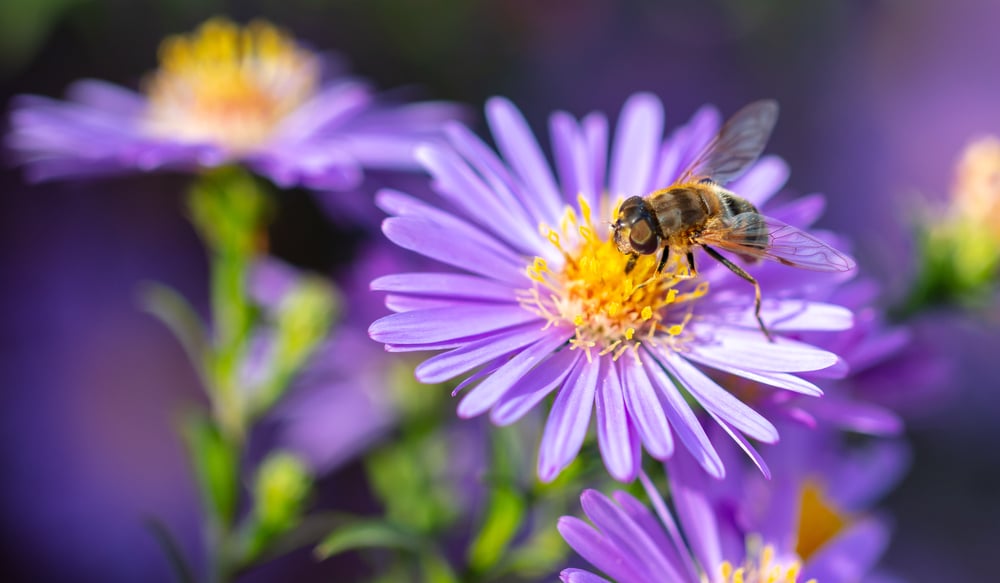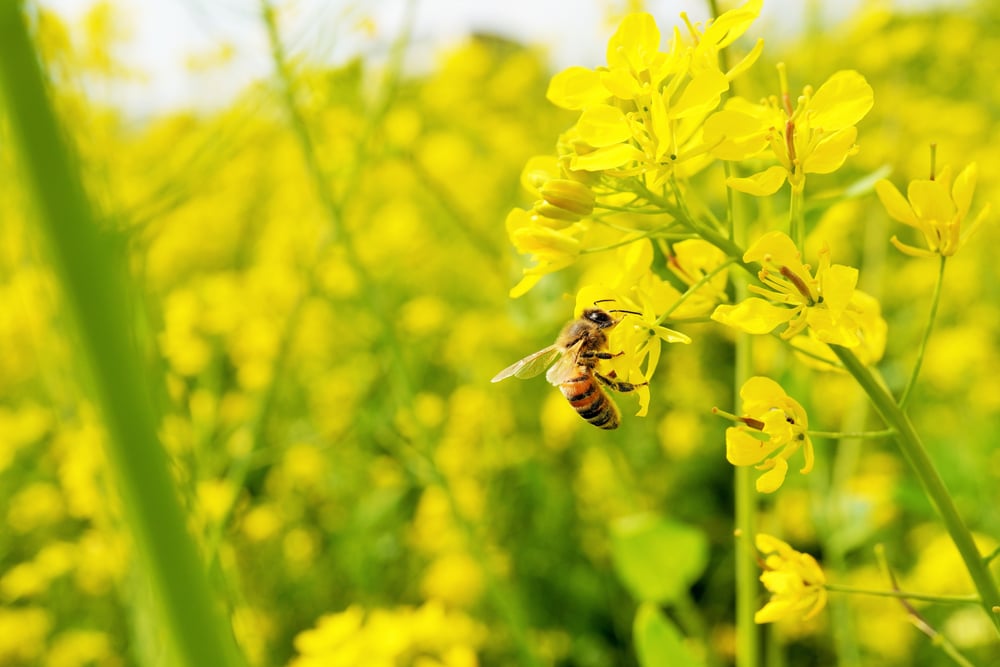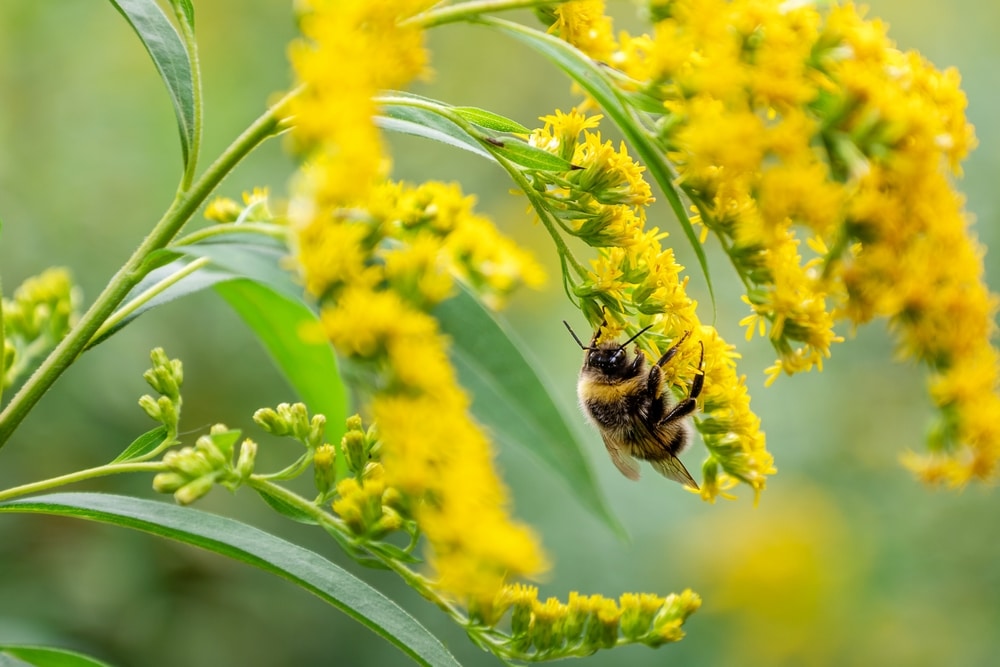If you’ve paid attention to conservation reports in the news or on social media, you may have heard people talking about the importance of bees. But this leaves many people confused; how can such a small, seemingly insignificant creature play such an important role? Just why are bees so important (and why should you care)?
Bees are important for many reasons. They are pollinators, meaning they help most plants and crops reproduce. Bees also tell us about environmental changes, and they’re essential to our economy.
Are All Bees Important?
There are around 20,000 different species of bees on planet Earth, and they are all essential. From the fuzzy bumble bee to the common honey bee, the mining bee, sweat bees, and many other species. Without them, the world would be a very different place.
While some see bees as a nuisance (and they can be at times), it’s still crucial to realize their significant role in nature.
Why Are Bees Important?

If you’ve never looked into the role bees play in the ecosystem, you could easily be forgiven for thinking that they’re unimportant.
But the opposite is true.
A world without bees would look totally different, and it wouldn’t be a good thing. Allow me to explain the reasons these flying insects are critical.
They’re Pollinators
When talking about the importance of bees, one of the first things that usually comes up is that they are pollinators (they take pollen from one plant to another of the same species). There are many types of pollinators, but bees are among some of the most diverse and vital.
Pollination is the first part of plant reproduction. While some plants are self-pollinating (meaning they transfer pollen between male and female parts with no outside help), many rely on pollinators.
Some plants require wind or water to transfer pollen, but 75-80% rely on animal or insect pollination.
Pollination occurs when an insect or animal takes pollen from the male part of one plant and delivers it to the female part of another of the same species. The pollen then stimulates the production of seeds and fruits, which are the beginnings of a new plant.
Bees are one of the key players in this.
How That Affects You
So, what if bees weren’t around to pollinate plants; that wouldn’t affect you and me, would it? This is a very dangerous view to have because the reality of the situation is very different.
Bees are responsible for pollinating around one-third of all human crops. While there are methods of artificial pollination, these are not environmentally friendly, nor are they very affordable or as reliable as natural pollination.
Without bees, plants would stand a higher chance of extinction, and it’s been proven that crop yields would decrease. Since bees account for one in every three bites we take, we definitely want to give bees more care.
They’re An Indicator Species
An indicator species is any plant or animal scientists use to evaluate environmental conditions. Scientists usually select these species because of their sensitivity to slight environmental changes.
Bees are one such species. Bees are some of the first creatures to respond when things change within the environment. In cases where an environmental change occurs for the worse, we may see a drastic reduction in bee populations within that area.
On the flip side, where conditions are good, we see healthy bee populations and a lot of activity.
Where changes have caused a decline in bee populations, scientists can assess the situation and make further changes to increase the habitability of the area.
How That Affects You
Again, you might be asking yourself why the condition of certain natural environments would make a difference to you.
It all comes down to biodiversity. Biodiversity is a term used to describe species diversity within a particular area. You’re probably familiar with the food chain. If there’s a disruption to this because of a lack of biodiversity, it can have a domino effect.
For example, where there are not a lot of bees, certain plant species may not thrive. This would result in herbivores having fewer food sources. Consider that humans farm herbivores like sheep and cows for meat.
In other words, if bees don’t have enough food, our own resources are directly impacted.
Bees Affect Our Economy
Animal (including bee) pollination accounts for between $235 and $577 billion each year. This comes from crop sales and bee products that beekeepers sell.
How That Affects You
Imagine almost $600 billion being taken out of the global economy yearly. Wages would be lower, and getting a job would be more challenging, especially within agriculture and apiculture (beekeeping). On top of this, producers couldn’t meet the demand for certain products, including honey and beeswax.
Additionally, since bees are responsible for pollinating many different crops, their availability would decline. When you could get your hands on them, the price would likely reflect the aforementioned decline, so you’d end up paying a lot more.
Bees Are Under Threat

One of the most alarming things to me is that bees face significant threats. According to studies, between 2006 and 2015, as many as 25% fewer bee species were recorded compared to pre-1990.
Habitat Loss
And things aren’t going to get any better if threats continue to batter the bee community. One of the primary threats is habitat loss. Humans are creating urban developments in areas bees once thrived in. They’re removing grasslands, woodlands, meadows, and other areas bees rely on for food and nesting spots.
Even where there are still plenty of bee habitats, fragmentation often affects them. This occurs when humans build in the center of a habitat, splitting it into smaller sections that aren’t enough for bees to access all the resources they need. What’s more, with fewer bees in each fragment, finding a mate is much more challenging, which directly impacts population numbers.
Another critical threat bees face is our use of pesticides and other chemicals. This happens both domestically and commercially, with some agricultural businesses using shocking amounts of chemicals.
While these pesticides do positively affect the number of pests that could interfere with crops, they also pose a risk to bees, which we need to pollinate those same crops.
That said, since many are bringing awareness to this matter, more and more farmers are opting for organic pest control methods. A common method is to alter farming practices to disrupt pest activity.
Climate Change
Climate change seriously threatens many species, and bees are no exception. The problem is rising temperatures are causing bees to emerge from hibernation too early. When this happens, many flowering plants are yet to bloom. So bees struggle to survive on extremely limited food sources.
What’s more, this affects their breeding patterns. Bees need optimal flying conditions and often struggle to fly in wet weather. But because of climate change, summers tend to be more humid, and rainfall is more common.
Since bees cannot fly in these conditions, they cannot take advantage of foraging opportunities, affecting their ability to breed and feed their young.
How You Can Help Bees

Understanding just how many threats bees face can make you want to jump into action, so you’re likely wondering what you can do to help protect these essential insects. The good news is that if we all do our bit, we can provide the bees with a safe and healthy environment. Here are my top tips:
Create A Bee-Friendly Garden
Create a bee-friendly garden by adding many native flowering plants bees can use for nectar and pollen. Group similar species together, as this will aid in their foraging efforts.
Use Alternatives To Pesticides
There are many organic methods, such as hand-picking pests from the plants, washing them away with water, or even using a dish soap and water mix to eliminate things like aphids.
Provide A Water Source And Nesting Spots
It only needs to be a small water source, and nesting spots can include old log piles, long grass, and even a bee hotel! After pruning your plants, you can even leave behind hollow stems, as many bees will make a home here.
Raise Awareness
By doing this, you can help more people create bee-friendly gardens, giving these beautiful creatures a place of safety.


